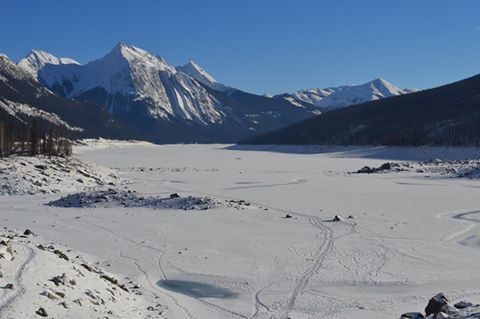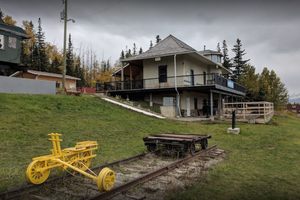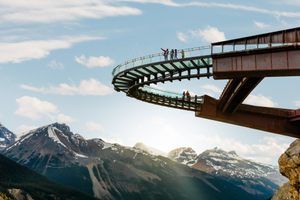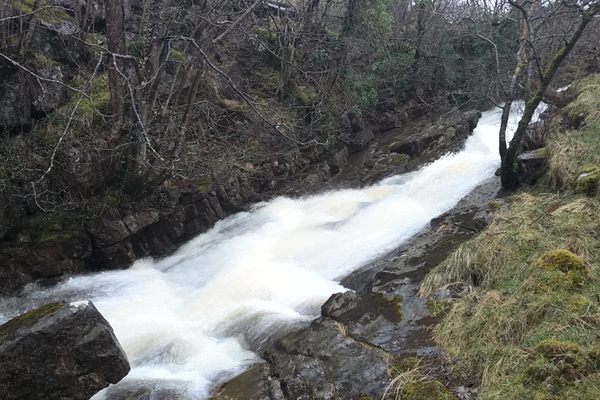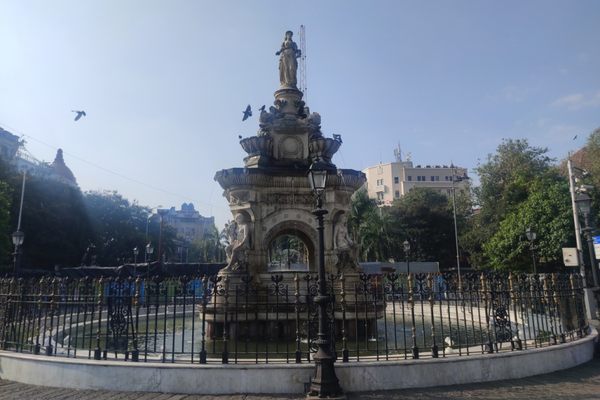About
Summer visitors to Medicine Lake would assume it is a normal mountain lake, but they would be wrong.
During the summer, glacier melt waters flood the lake, sometimes overflowing it and in fall and winter the lake disappears, becoming a mudflat with scattered pools of water connected by a stream, all of which is not so unusual, lakes empty all the time. What makes Medicine Lake unusual is that there is no visible channel for draining the lake – so where does the water go?
The answer is, "out the bottom," like a bathtub without a plug. The Maligne River pours into the lake from the south and drains out through sinkholes in the bottom. The water then streams through a cave system formed in the slightly soluble limestone rock, surfacing again in the area of Maligne Canyon 16 kilometers downstream.
The underground system is extensive and during the 1970s researchers used a biodegradable dye to determine the underground river's extent. The dye showed up in many of the lakes and rivers in the area to the point where it became clear that the underground system was one of the most extensive in the world. This makes Medicine Lake the entrance of one of the largest known sinking rivers in the Western Hemisphere and what may be the largest inaccessible cave system anywhere in the world!
Summer meltwater coming into the lake exceeds the capacity of the sinkholes to drain it, but decreased melt water in the late summer and fall means that the lake's sinkholes can drain the lake faster than the Maligne River can fill it. This creates the disappearing lake phenomena. Aboriginal peoples called the lake Medicine because of its seemingly magical powers, and the United Nations created the Rocky Mountain Parks World Heritage Site partly because of this unique drainage system.
Medicine Lake also boasts a healthy population of rainbow trout and brook trout and is a popular spot for fly fishing. Wildlife is also abundant along this high altitude lake. Grizzly bear, black bear, mule deer, caribou, wolves, moose, and mountain sheep are some of the larger mammals that frequent the lake area during the summer season. Bald eagles and osprey also frequent the area and live off the fish populations.
Related Tags
Know Before You Go
4 hours west of Edmonton, Alberta
Yellowhead hwy
Community Contributors
Added By
Published
May 26, 2010




